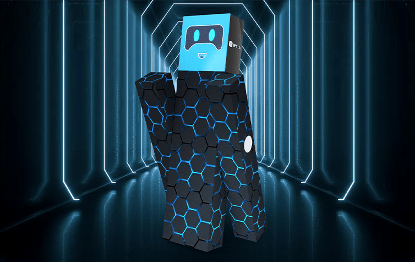
Since the launch of ChatGPT by OpenAI at the end of 2022, Artificial Intelligence has taken the world by storm. This machine is capable of answering most questions and has quickly become the fastest growing application, attracting over one hundred million users. The explosive growth of AI tools is because people can now truly use AI. Unlike other trends such as Crypto, drones or self-driving cars, AI does not have a high barrier to entry. Anyone can use AI to complete tasks and even increase their efficiency in professional work. In comparison, in Crypto, you can only buy one token and pretend it’s all yours.
Generative AI
Generative AI essentially combines publicly available information and processes it according to user requests, from explaining complex concepts in simple terms to creating visual scenes for specific scenarios. AI can give results to instructions requested within minutes, even if the outputs may not always be convincing. But with enough tweaking, you will eventually get something that could be considered as content generated by humans, provided the topic is generic and you don’t expect any personalized elements.
In Web3, AI platforms can incentivize crowd-sourced datasets through the provision of tokens. Contributors such as artists can share their works and generate artworks of a particular style through models. If the user who inputs the query decides to use a work, they can mint an NFT that displays the model and input data used. Such generative artworks will be as valuable as past NFTs since their source is verifiable. The next OpenSea might integrate such generative art forms, contributors providing data or running queries, and on-chain primitives to prove the components included in the work. Groups responsible for maintaining and optimizing models can rent them out to markets where users want to mint NFTs.
With the advent of AI tools that require only a small amount of data to train, the artists who initially contributed to creating these tools may become redundant. To ensure fairness, they can be given a proportionate amount of tokens based on the usage of their work. Imagine if those artists who contributed to the early development of OpenSea could receive equity or tokens as a reward on the platform. Then, they wouldn’t have to worry about royalties like they do now.
Looking at OpenAI’s development over the past few months, it is clear that ordinary users cannot use tools to counter platform monopolies. Between tokens, NFTs, and blockchain sources, the industry has created an ample set of tools to address the wave of fake news and unemployment that will face us in the coming years. This is no longer just about crypto, but about how to build a robust system to prevent AI from producing meaningless content and causing chaos.
When the internet first emerged, we had no tools to verify sources or govern platform monopolies. Now, the situation has changed, and training GPT-AI platforms have shown us a distributed, community-owned infrastructure and viable centralized alternatives.

Training GPT-AI
GPT-AI is a decentralized web3 project developed and created independently using CHATGPT artificial intelligence. The goal of GPT-AI is to enable everyone to have and train their own AI robots, eventually forming a huge scale of AI applications, transactions and rental platforms.
For example, if you are an image processor, designer, nutritionist, fitness coach or a chef, you can teach your AI robot your best skills and knowledge, continuously training it, accumulating data, optimizing its data structure, making it more professional. Such AI will be the most popular presence in all industries of Web3, and you can serve other users by renting or selling AI robots, thus earning commissions for yourself. This is the huge demand value that has been released by the combination of Web3 community and AI, and the value generated after solving the demand is returned to the users who keep training GPT-AI robots.
The decentralized and distributed features of Web3 provide better support for GPT-AI. In the Web3 ecosystem, all data and applications are stored on a decentralized blockchain network, which is public, transparent, and immutable. The distributed data architecture makes it easier for GPT-AI to access and share data while ensuring data security. In addition, the smart contract function of Web3 can also provide GPT-AI with more flexible and efficient transaction and training mechanisms, making the application and sale of GPT-AI more convenient.
GPT-AI is like a blessing, with its collaborative nature and more mature and humanized professional knowledge after training, it’s more suitable for all the Web3 user groups than the potential threats of automation and replacing humans.
Learn more: https://gpt-ai.io/
Media Contact
Company Name: GPT-AI
Contact Person: NICK
Email: Send Email
Country: United States
Website: https://gpt-ai.io/
